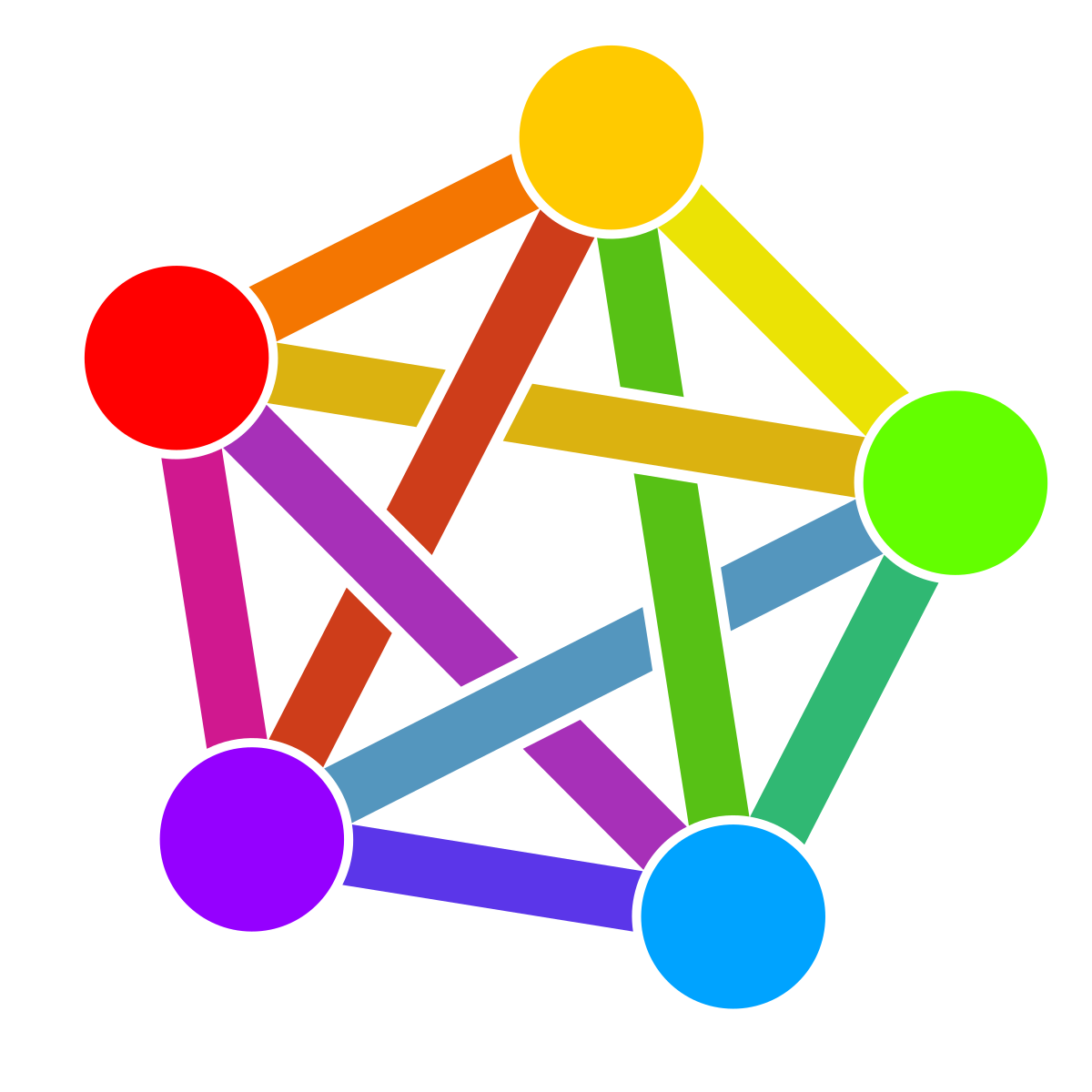This post is a sort of partial dump of my efforts towards an idea/proposal for improving discoverability and onboarding for the Fediverse while avoiding new users just being dumped on a centralised instance. I’ve seen people suggest that one of our secondary defenses from megacorp social media (like Meta) is improving our UI, so this is part of my attempt to do that.
We can use our non-monetizability to construct algorithms specifically for the purposes of people finding the content and groups they want, rather than for the purposes of selling them shit.
I actually started working on this during the Reddit Migration, but got sidetracked with other things ^.^, so I’m dumping it here for everyone else to make more progress!
I want to discuss a rough proposal/idea that eases the onboarding of new users to the fediverse, and discovery of groups, while hopefully distributing them across more instances for better load balancing and decentralization. More generally, it should enable easier discovery of groups and instances aligned with your own sentiments and interests, with a transparent algorithm focused on user control and directly connecting people with entities that align with what they want to see.
I may interleave some ActivityPub terms in here because I’ve been working on a much larger proposition for architectural shifts (capable of incremental change from current) that might allow multi-instance actors and sharding of large communities’ storage - I want the fediverse to be capable of arbitrary horizontal scaling. Though of course that will depend heavily on my attention span and time and energy. I might also just dump my incomplete progress because honestly my attention is on other projects related to distributed semiconductor manufacturing atm ^.^
What this post addresses is the current issue of onboarding new users ^.^, and helping users discover communities/instances/other users. These users typically are pointed to one of about 5 or 6 major instances, which causes those instances to have to eat costs, especially since loads of users in one place means loads of communities - and the associated storage needs - in one place (as users create communities on their instances).
My proposition/idea consists of the following:
- A mechanism by which instances can declare their relevant purposes in a hierarchical, “refinement” manner
- A mechanism by which instances can declare what sort of instance they are - lemmy, mastodon, kbin, etc.
- A mechanism to specify those purposes such that different terms can be merged in a given instance - for example, multi-language terms for the same item
- A relatively simple algorithm that lets instances select hopefully other reliable instances that are relevant to someone and automatically link over to them on signup.
- A proposition for a hopefully intuitive UI with sensible defaults ^.^
- (maybe in another post) an idea for simplified Fedi signin.
Self-Tagging Structure
The first part of the proposal is specifying a way for instances to tag their general topics and category at varying levels of specificity.
Tagging the “Type” of Social Media an Instance is Running
Each instance should have a descriptor of what software it is running.
This serves as a proxy for what “type” of social media it is (reddit-like, twitter-like, whatever kbin is, etc.), taking into account that users are likely to have visited an instance based on reports that the type of software it runs is what they want.
I propose some string endpoint like instance_software in the top-level instance actor.
Tagging the Focus of Instances
Generally speaking, instances fall into several categories:
- General purpose instances
- Instances which lean towards some topics but are general purpose.
- Instances that are very focused towards some topics to the exclusion of others.
There are also instances with varying levels of moderation, which may be encompassed in this. ^.^
To solve this problem, instances should provide an endpoint (for now, let’s call it instance_focus) in their representative actor that produces a collection of so-called subject trees with associated weights.
Subject Trees/Sentiment Trees
Each subject tree is a nested list that looks like the following:
{
"weight": 1,
"polarisability": -0.7,
"subject-tree": {
{
"subject": "programming",
"terms": {
{"en", "programming"},
{"en", "coding"},
{"en": "software-development"}
}
},
{
"subject": "language",
"terms": {
{"en", "language"}
}
},
{
"subject": "rust",
"terms": {
{"*", "rust"},
{"*", "rustlang"}
}
}
}
}
This indicates an instance/other-group that is interested in programming, specifically programming languages or a programming language, and specifically the programming language rust. It also indicates an estimated polarisability by this instance for /programming/language/rust/ of “-0.7” i.e. they estimate that people who feel a certain way towards one subtopic of /p/l/rust/ will also likely feel a similar way to other subtopics of /p/l/rust/ unless explicitly specified. There may be other fields which indicate some of the more complex and specific parameters documented in [the proto-algorithm I wrote][algorithm-snippet], such as specific polarizability with sibling subjects (e.g. if rust had antagonistic sentiments toward cpp, it may have a "sibling-polarizability": { "cpp": 0.5 } field, or something similar).
A useful compact syntax to indicate the tree (for, for example, config files), might look something like the following: /programming{en:programming,en:coding,en:software-development}/language{en:language}/rust{*:rust,*:rustlang}/
This encodes the terms that it knows for these concepts, within the context of the subject above it, along with the language that term is in (star indicating many human languages where the same term is used, e.g. with proper names).
For this system to work, there must be a roughly-agreed upon set of names to use as keys.
The "subject-tree" for “general interest” is just an empty list {} ^.^


Step 4 - Term Merging
Each instance has provided subject trees of what it’s community is meant to be like. Moreover, it has provided the terms it believes to refer to various concepts within their subject tree.
This step is where all those terms get merged together to then be used later via some kind of search algorithm, for the more sophisticated cases.
The steps are as follows.
Step 5 - Common Interest Weighting
Apply Common Interest Weighting via the Common Interest Algorithm between the user and each possible instance.
There may be a way to use Heaps or some hierarchical datastructure to sort the instances to do this more efficiently, but as long as the implementation of the Common Interest Algorithm uses BTrees and pre-calculates lexicographically ordered maps of data it can be ensured that the cost of this kind of commonality assessment only grows with the size of the tree specified by the user and the single instance to be compared, rather than all instances (for an individual instance/user comparison ^.^).
There may also be ways to compare the user against all instances at once more efficiently that I don’t know of. But the point is, we can use the Common Interest Algorithm to assign weights for each instance/group/etc. relative to each user.
We could also use some way to convert a user search query into their Common Interest Algorithm tree weights, using the list of known terms. This is for slightly more advanced terms or people perhaps searching for communities or other groups too.
Step 6 - Elimination of Anti-Aligned Instances
Any instances/groups/communities/etc. with alignment
<0should be immediately eliminated from the list of suggested instances/groups/communities/etc. to the user.Step 7 - Combining Sentiment Alignment Weights & Other Ranking, plus Final Selection
We already have some ranking information based on how willing and able an instance is for new users, plus we have information on how aligned each instance is with this hypothetical new user - now all a fraction from 0 to 1, as we cut out instances that have a negative alignment with the user ^.^. Then I suggest we find some simple way to join those two values together. For now, I suggest simply multiplying the alignment fraction with the weights for each instance, and then use probabalistic selection to direct the user to an instance that aligns with what they want ^.^
It may also be desirable for instances to prioritise somewhat older instances with better uptime, or more trustability (e.g. using some kind of heuristic to detect bot instances or similar), and modify the weightings based on that, or eliminate some instances ^.^
For non-instance searching or discovery, we can use the alignment ranking directly as a form of search ranking :)
Step 8 - Redirection
Redirect the user to the “final” signup page as listed in the instance metadata, along with the parameter for their desired username. Perhaps it would be worth using
webfingerto make sure the username isn’t taken on any selected instance, and automatically selecting different instances from the list until you find one without the username taken already, with a warning.If we’re talking about discoverability of communities or similar, you just put those in order of their direct sentiment alignment rank ^.^
I would LOVE to see a user tuneability control for continued content discovery along these same weighted relationships. Kind of like a Discover Weekly meter that you could adjust/threshold to see suggested content from instances that are more vs less similar to ones we follow. You may have said that in here but either way this seems really useful for instance steering/selection and distribution.
@Igotz80HDnImWinning @sapient_cogbag
Seems super useful.